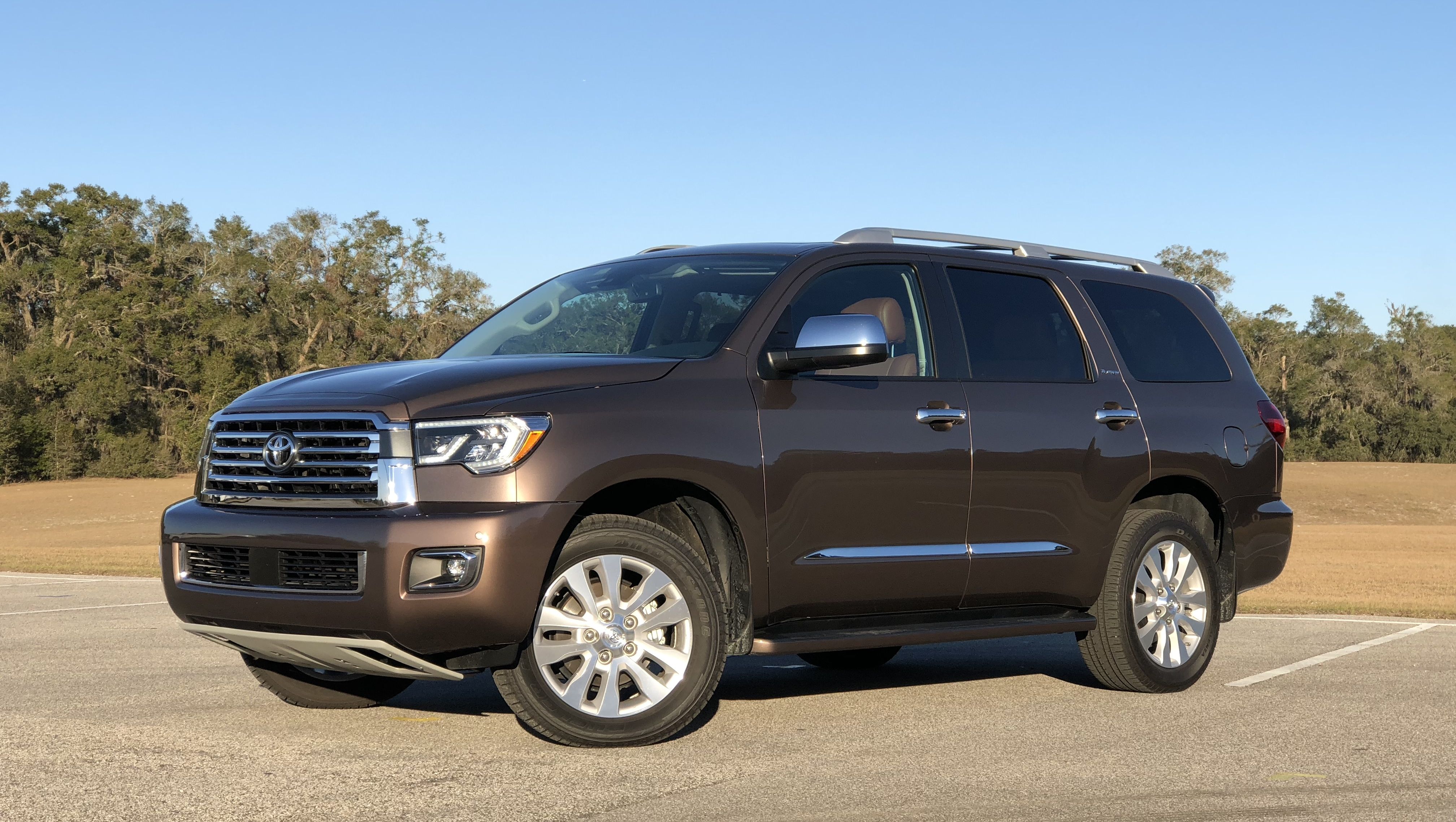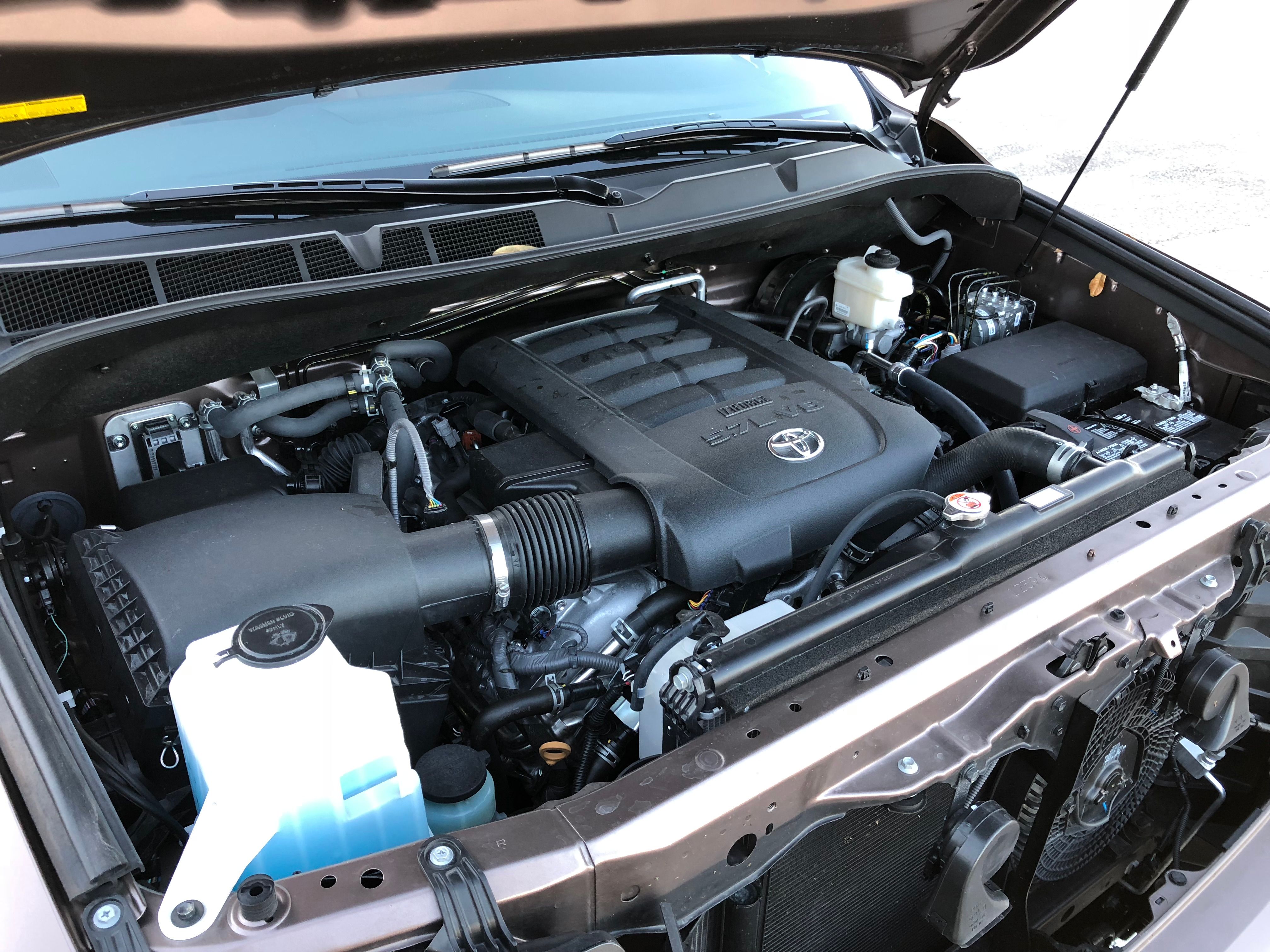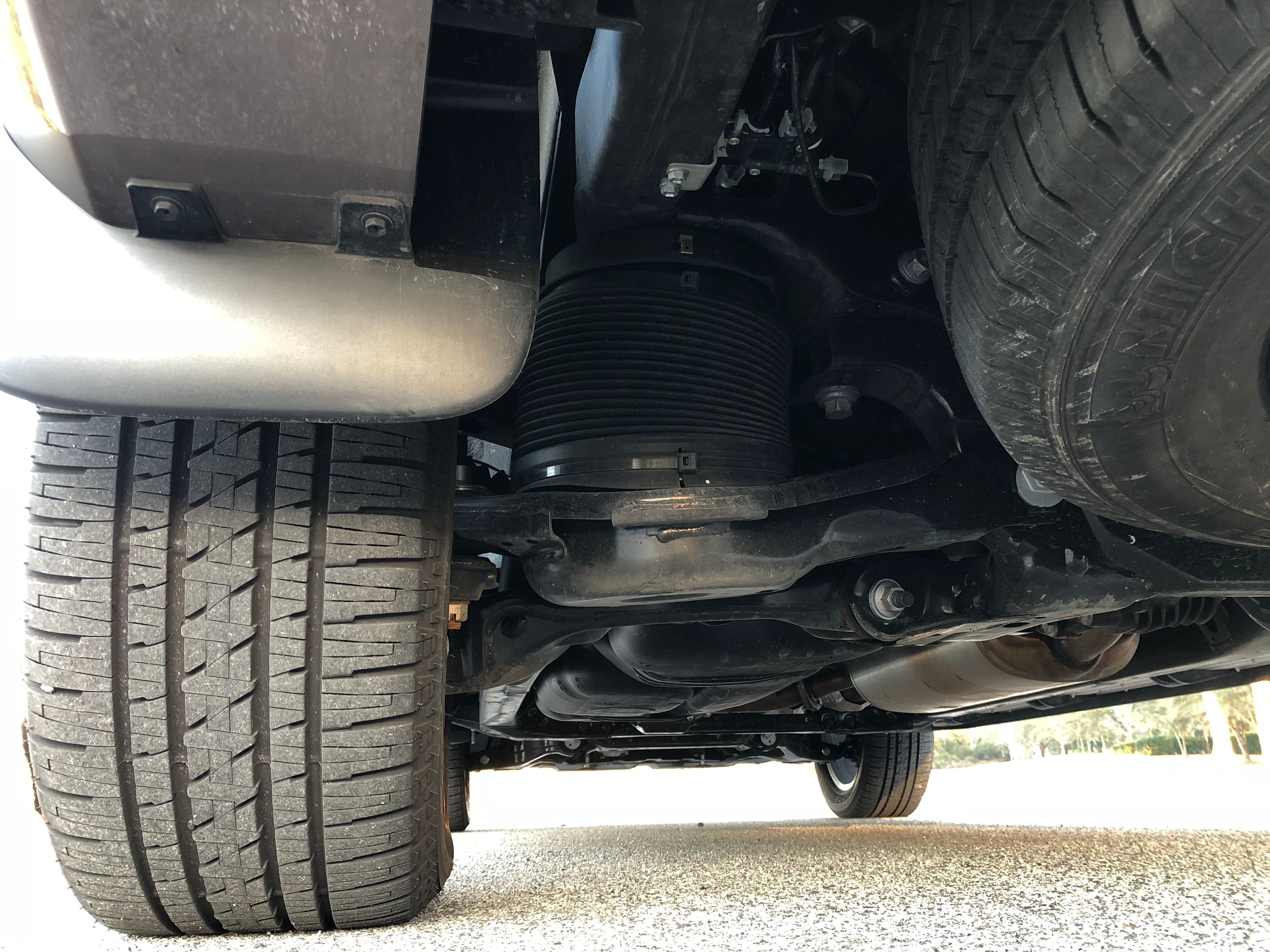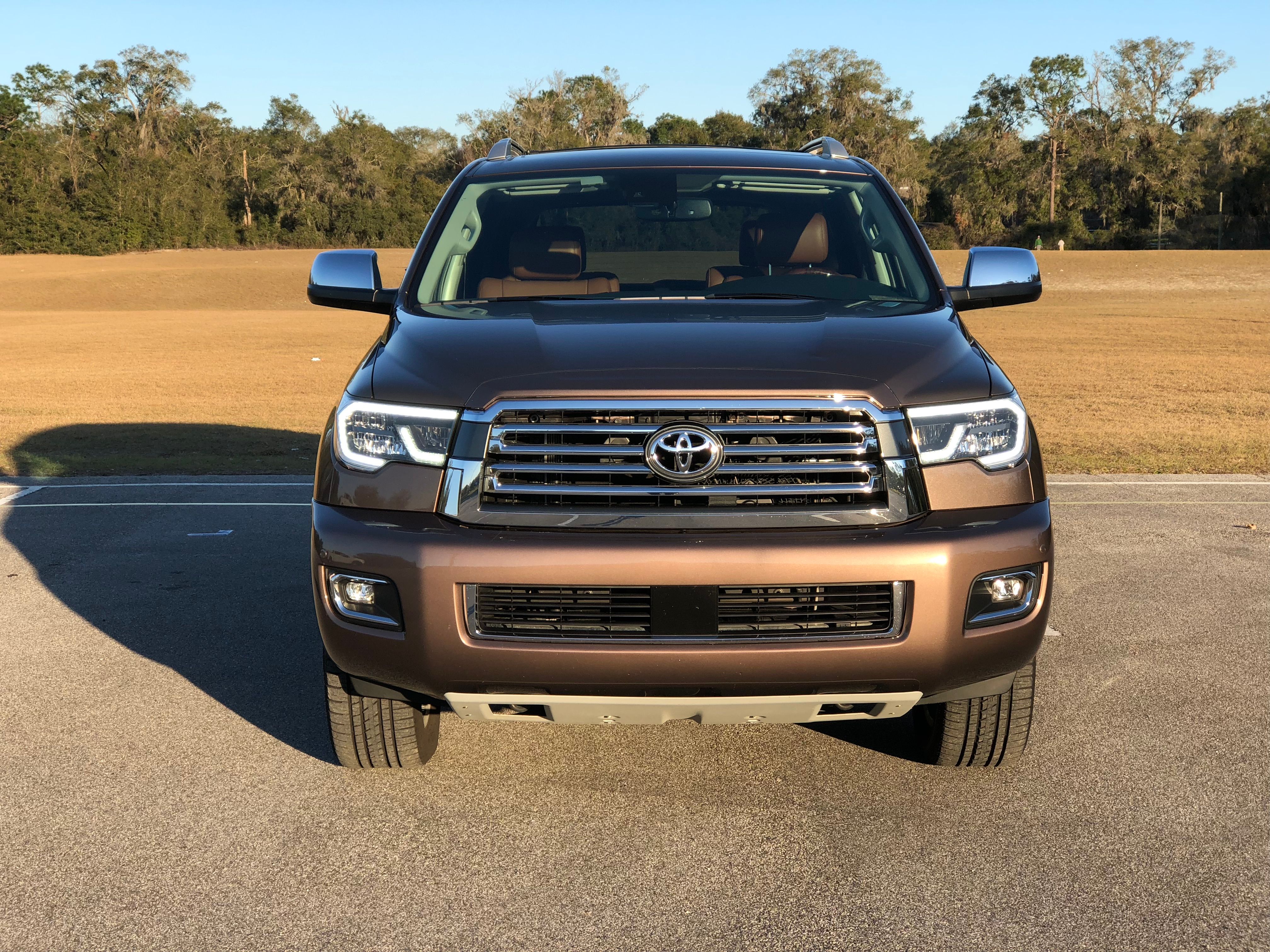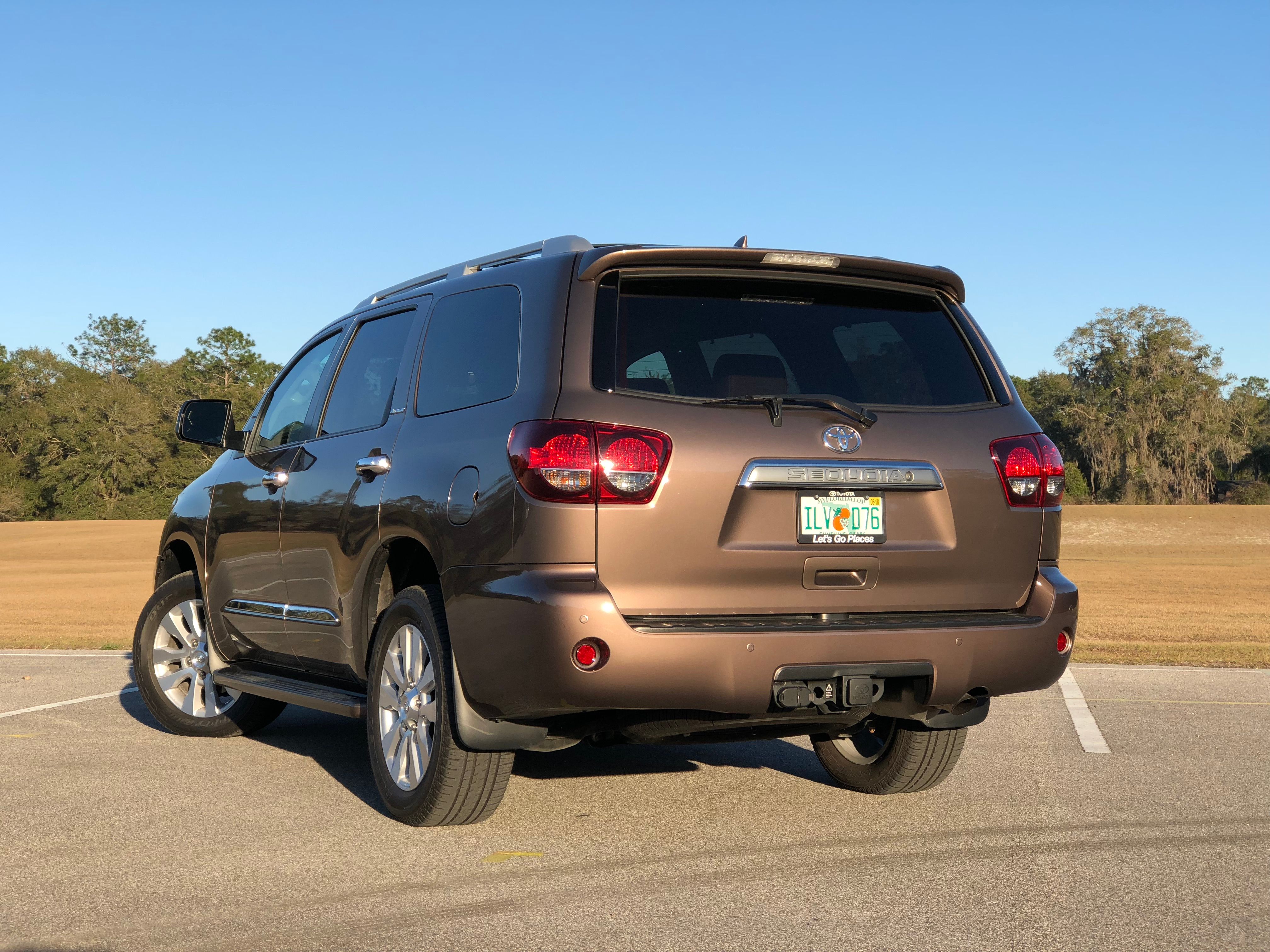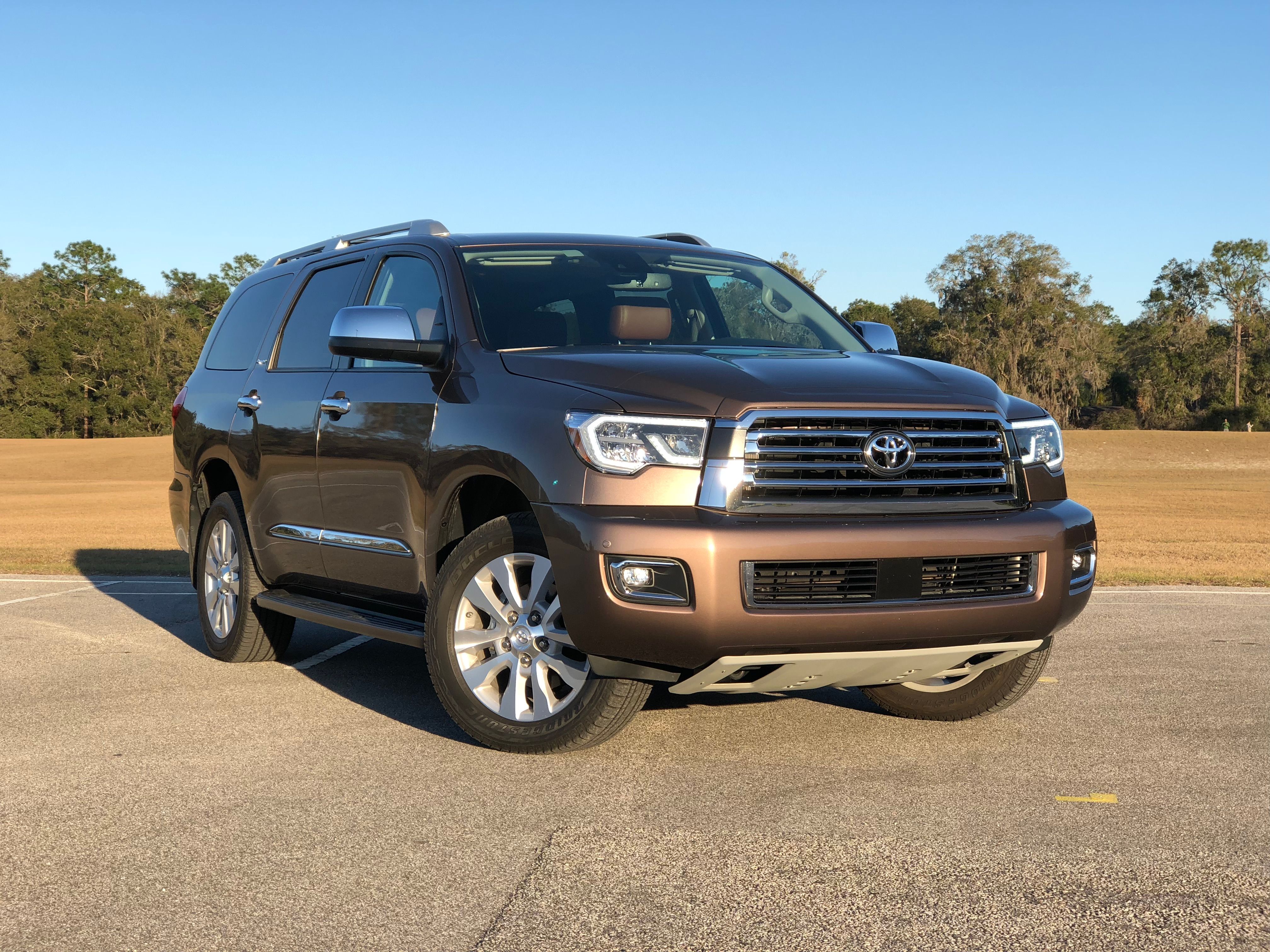The Toyota Sequoia is far from the newest or most technologically advanced SUV on the road, even after its mild update for the 2018 model year. Rather, this three-row people mover is firmly planted in the past. It rides on a traditional ladder frame, uses a part-time 4WD system with low-range gears, and has a limited-slip center differential that can be completely locked on the fly.
While I have knocked the 2018 Sequoia for its very minor update and its poor fuel economy, the SUV remains impressive in the sense that it retains all the aspects of a traditional SUV. Yeah, it doesn’t have a solid rear axle and leaf springs, but it does have just about everything else that has made SUVs so utilitarian and lovable since the 1950s.
Let’s check out the Toyota Sequoia’s rugged underpinnings.
Continue reading for more information.
Starting out with the Sequoia’s backbone, the SUV rides on a ladder-style frame with horizontal cross members. The body is bolted atop the frame while the four-wheel independent suspension is mounted down below. Generally speaking, a truck-style frame is more rigid and therefore stronger than the unibody-style chassis that underpins cars and crossovers. The Sequoia’s trailer hitch receiver is even incorporated into the last cross member, meaning that welds hold the hitch in place rather than bolts.
As for the suspension, the Sequoia uses an independent system at all four corners. Up front are MacPherson struts while the rear suspension of the range-topping Platinum trim uses auto load-leveling air springs. The rear air suspension also offers driver adjustability with three ride modes that include Sport, Normal, and Comfort.
The Sequoia’s powerplant is a beefy 5.7-liter V-8 with 381 horsepower and 401 pound-feet of torque. The engine does make use of dual overhead cams with variable valve timing on both the intake and exhaust sides but does not have direct fuel injection or cylinder deactivation. It also doesn’t’ have Toyota’s switchable Otto/Atkinson combustion cycles. Still, the macho Sequoia is capable of towing 7,400 pounds on its hitch and can haul roughly 1,300 pounds of cargo.
Mated behind the V-8 is a tried and true six-speed automatic transmission. Toyota has been using this same gearbox in both the Sequoia and Tundra pickup since their introductions in 2008 and 2007, respectively. Both the SUV and truck use a part-time 4WD system, too.
The Sequoia’s 4WD system works like most part-time systems on the market. It sends power to the rear wheels for regular, everyday driving. Only when the driver rotates the dash-mounted knob to 4H does the system split power to the front wheels. In 4H, the transfer case delivers power to all four wheels and counteracts any wheel slip thanks to an embedded Torsen limited-slip differential within the transfer case. Should the going get really tough, the driver can simply press a button on the dash and the limited-slip center differential will fully lock up, providing an even 50/50 torque split to the front and rear axles.
Unfortunately, both the front and rear differentials are open, meaning the wheel with the least amount of resistance (grip) will receive the most power. Toyota does not offer its A-TRAC or Multi-terrain Select system on the Sequoia. Both are offered in certain trim levels of the Tacoma and 4Runner. However, the both 2WD and 4WD Sequoias come with an Auto LSD (limited-slip differential) that uses individual brake inputs to control wheel spin in off-road situations. Simply pressing the traction control button will activate this system. So while the Sequoia isn’t completely well suited for extreme off-road driving, but its 4WD system should be more than capable of getting 90 percent of owners anywhere they need to go.
Also included in the Sequoia’s 4WD system is 4WD Low. The low-range gears provide torque multiplication, giving the SUV even more guts to power out of a tough spot. 4WD Low is best used for low-speed situations where tons of torque is needed. Examples include pulling a boat out of the water at a ramp, trudging through deep mud or sand, and climbing or descending steep terrain.
The 2018 Toyota Sequoia we’re testing this week also boasts Toyota’s optional front skid plate. This $425 option consists of an aluminum plate that protects the front bumper, the bottom of the radiator, and the engine oil pan from getting smashed by off-road obstacles. The skid plate has cutouts for the Sequoia’s two front tow hooks, making them easy to access for recovery situations.
The Sequoia’s 6,000-pound curb weight and modest approach, breakover, and departure angles are its biggest limiting factors for hard-core off-roading. But like we mentioned above, not many customers will need more off-road capability than what the Sequoia provides. If they do, Toyota will happily point them towards the Land Cruiser.
The Sequoia Isn’t Alone
While the Sequoia has some commendable traditional qualities, there are several competitors that boast the same features. The General Motors SUVs (Chevy Tahoe and Suburban, GMC Yukon and Yukon XL, and the Cadillac Escalade and Escalade ESV), the Ford Expedition, and the Nissan Armada all ride on a body-on-frame platform, some form of 4WD or AWD, and offer greater off-road and towing specs than a modern crossover.
We’ll be comparing the Sequoia against a few of these models in the coming days.
References
Toyota Sequoia
What’s New on the 2018 Toyota Sequoia
Read our full review on the 2017 Toyota Sequoia.
Read more Toyota news.

